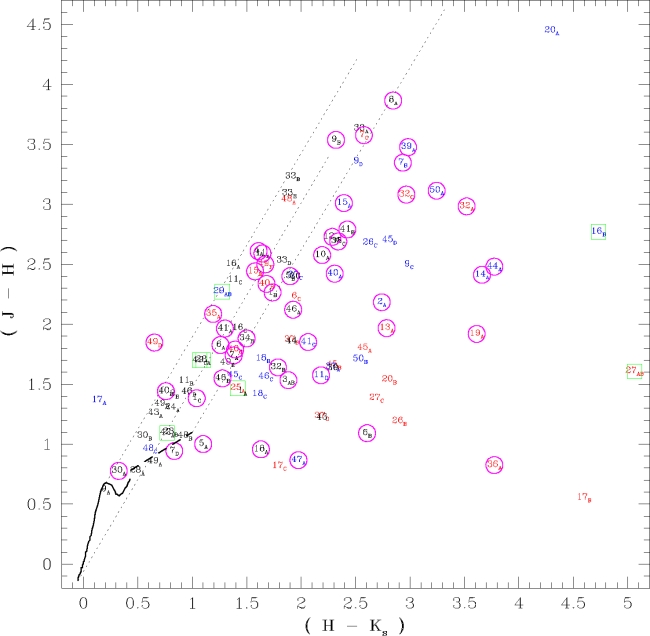| EPoS Contribution |
|
A near IR imaging survey of high and intermediate-mass young
stellar outflow candidates
Watson P. Varricatt Joint Astronomy Centre, Hilo, HI, USA | |
| We present the results of an imaging survey of 50 luminous young stellar outflow candidates. Observations were obtained using the United Kingdom Infrared Telescope in the broad band K (2.2 mu) filter and through narrow band filters at the wavelengths of H_2 v=1--0 S(1) (2.1218 mu) and Br gamma (2.166 mu) lines with a field of view of 2.2 X 2.2 arcmin. Several young embedded clusters are revealed in our near-infrared images. 76% of the objects exhibit H$_2$ emission and 50% or more of the objects exhibit aligned H$_2$ emission features implying the presence of collimated outflows, many of which are new detections. Our observations suggest that disk accretion is the leading mechanism in the formation of stars, at least up to late O spectral types. The YSOs driving many of these outflows are dentified in our images based on their locations with respect to the outflow lobes, 2MASS colours and association with MSX, IRAS, millimetre and radio sources. The close association of molecular outflows detected in CO with the H_2 emission features produced by shock excitation by jets from the young stellar objects suggests that the outflows from these objects are jet-driven. Our observations suggest that most of the accretion happens in the pre-UCHII phase and that accretion and outflows are probably weak when the YSO has advanced to its UCHII stage. | |
 | |
| Caption: Near-IR colour-colour diagram produced using the 2MASS JHK_s magnitudes. The continuous line denotes the locii of the main sequence stars, the dashed line shows the locii of CTTS and the three dotted lines show the reddening vectors up to A_V=30. The sources which we think are the IR counterparts of the YSOs driving the outflows detected in H_2 are circled. Sources which are detected by 2MASS in all three bands are shown black in colour. Limiting colours of those which are detected in only two bands are shown in blue; limiting colours of those detected in only one band are shown in red. Near-IR counterparts of confirmed UCHII regions are enclosed in squares. | |
| Collaborators: C.J. Davis, JAC Hilo, USA S. Ramsay, ESO Garching, Germany S.P. Todd, UK ATC, ROE, UK |
Key publication
Suggested Session: Massive Stars |

